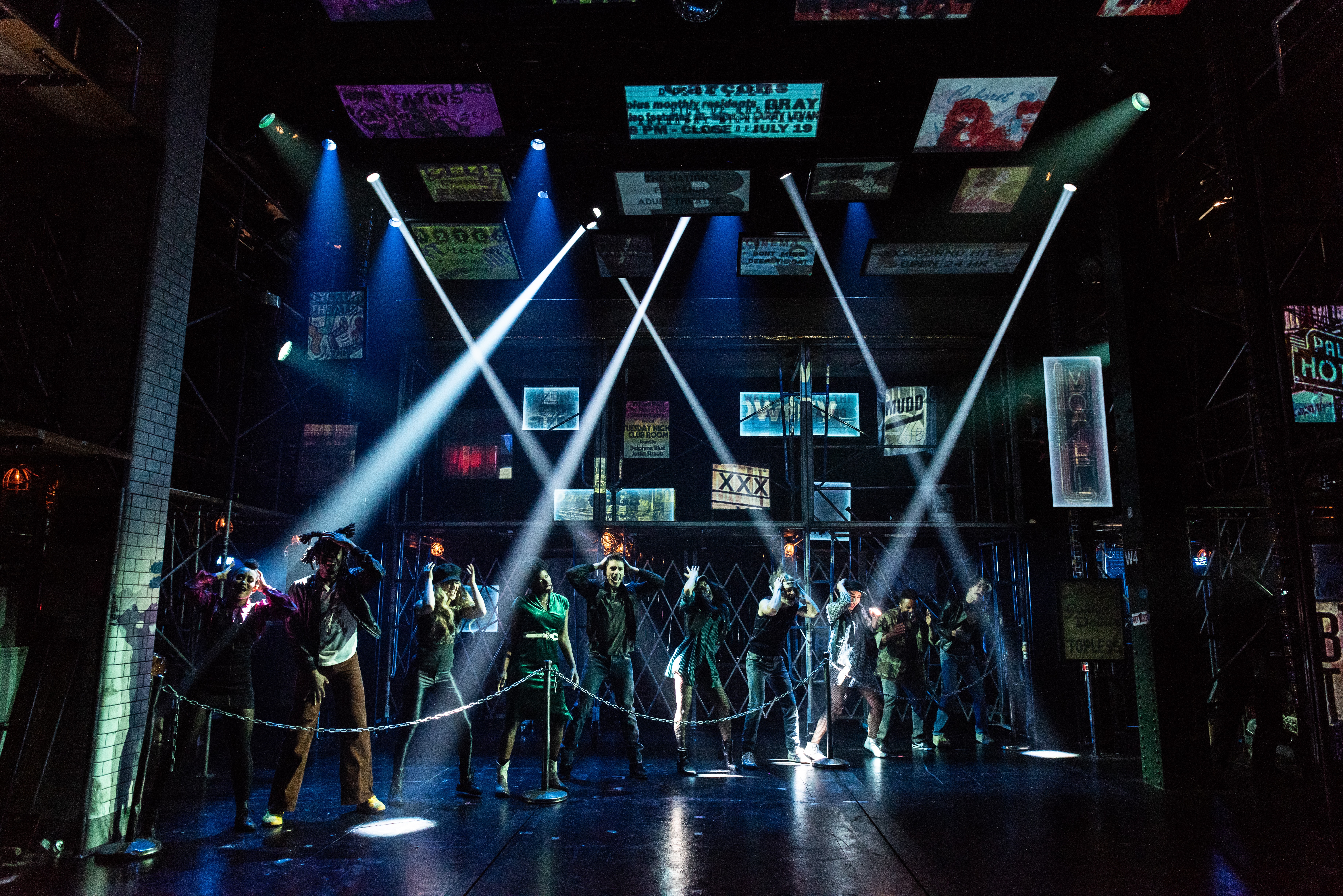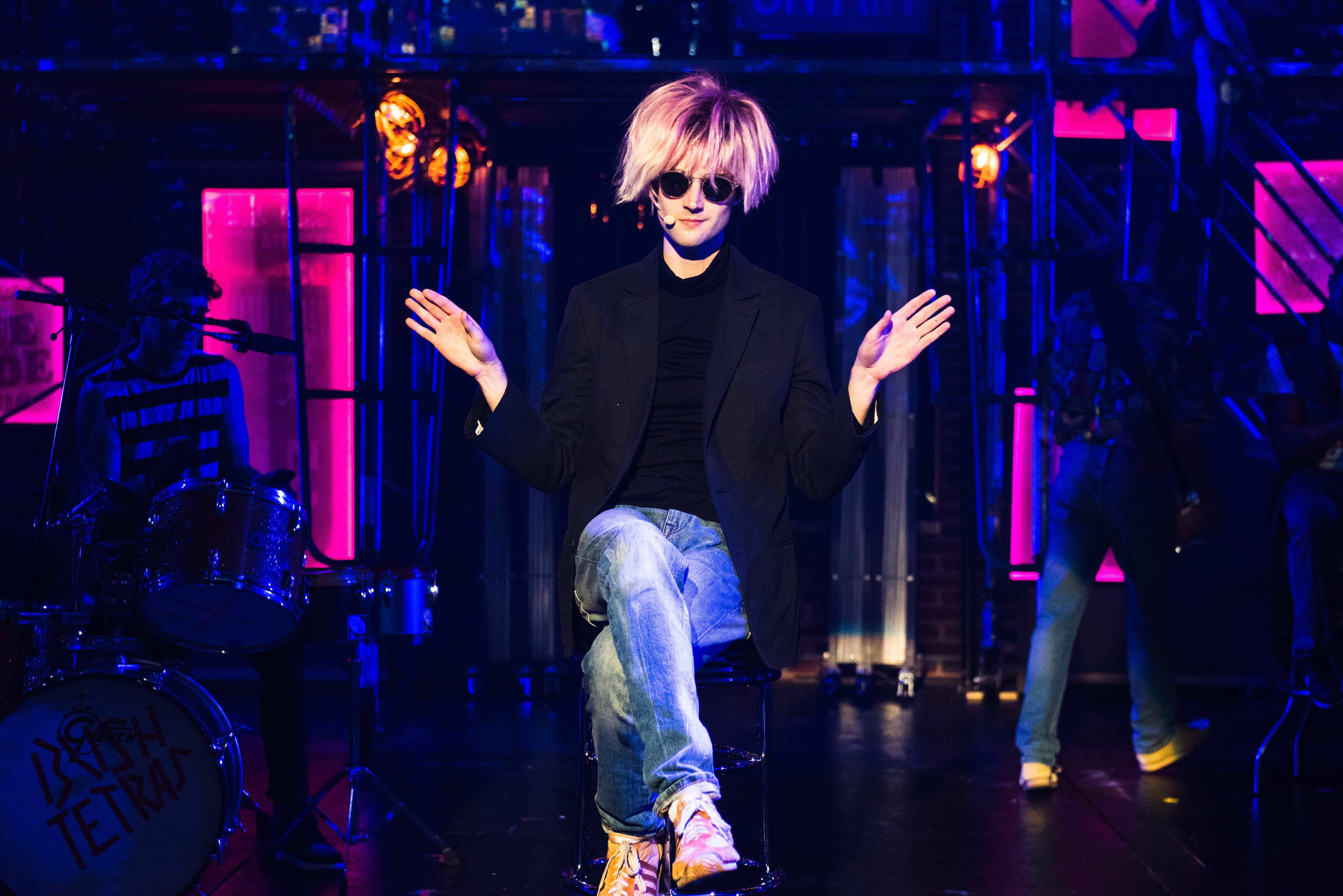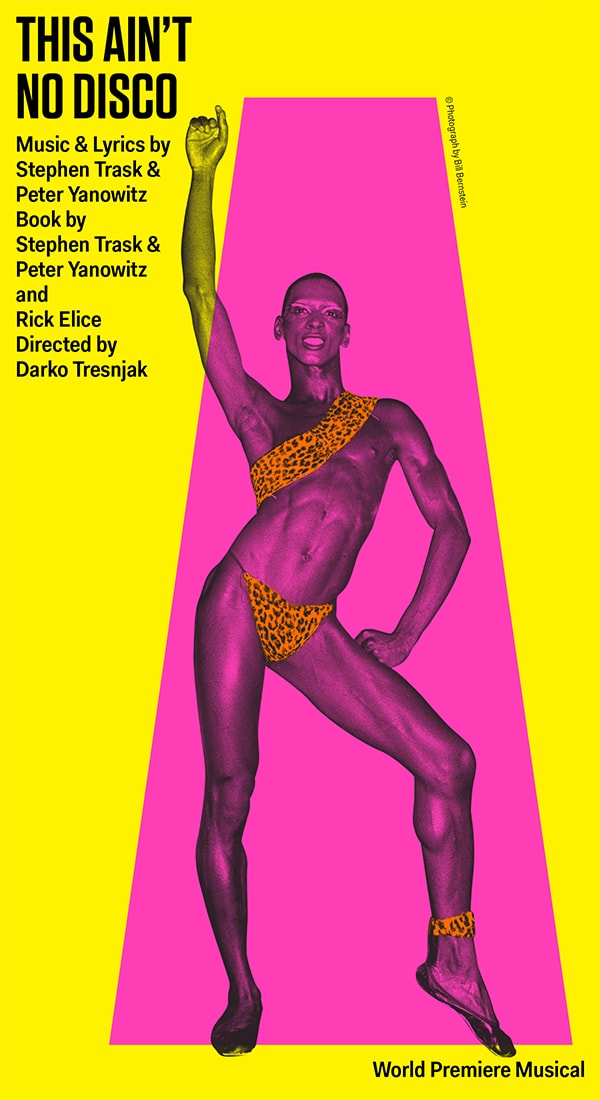With music and lyrics by Stephen Trask (internationally acclaimed for the electrifying and poignant score he created for Hedwig and the Angry Inch in 1998) and Peter Yanowitz (who played Schlatko the drummer in its Tony Award-winning 2014 Broadway revival), and book by Trask, Yanowitz, and Rick Elice (of Jersey Boys and Peter and the Starcatcher fame), Atlantic Theater Company’s world premiere of This Ain’t No Disco at the Linda Gross Theater has been highly anticipated. But this ain’t no Hedwig.

Set in New York City, 1979-80, the new musical takes a superficial look back at the club scene and art world of the era, interweaving references to the iconic places (Studio 54, the Mudd Club) and figures (Steve Rubell, Andy Warhol, Steve Mass) with stories of wannabes striving to be noticed (four struggling young artists, whose lives intersect, among them). Under the puzzling disjointed direction of Darko Tresnjak, it remains unclear if the intent of the work is history or parody, comedy, tragedy, or morality play; the result is a shallow, disconnected, and unsuccessful mish-mash, with no believable characterizations, no incisive humor, and no authentic evocation of the period – just the disassociated imaginings of co-creators who were too young at the time to have experienced it firsthand.
Self-described as “part rock opera, part impressionist tone poem,” the book and lyrics – rife with clichés, stereotypes, and anachronisms – are plagued by predictable storylines, heavy-handed caricatures, mawkish melodrama, and insipid rhymes (e.g., “stop/pop” “that/hat/cat,” which are intermittently inserted into the dialogue, not just the songs). The music lacks the power of rock, the driving beat of disco, the resonance of opera, or the aggressive rebellion of punk, comprising mostly unmemorable ballads and jejune show tunes. Consequently, Camille A. Brown’s choreography is not always in tune with the titular genre, and the cast tries too hard to compensate for the unsuccessful material it’s been given, with over-the-top portrayals of the coke-snorting Rubell (Theo Stockman) and the pushy publicist Binky (Chilina Kennedy) that are more annoying than funny, and the usual hackneyed depiction of Warhol (here called “The Artist” and played by Will Connolly, with a voice that’s too loud and a wig that’s too large), which is completely bereft of insight or originality.

There are some serious social issues associated with the four central dreamers – the transitioning of the transgender sculptor Landa/Landon (Lulu Fall) with the unwavering support of her loving partner Meesh (Krystina Alabado); the sexual abuse, pregnancy, single motherhood, and drug use of the rising star Sammy (Samantha Marie Ware); the early estrangement of Chad (Peter LaPrade) from his homophobic father and his later turn to prostitution after the failure of his hoped-for career and publicity-stunt marriage – but the plot points feel more cloying than sincere, lacking in emotional depth and glossed over by too-easy resolutions. Highlights of the show include Eddie Cooper’s appearance as the closeted D.A. who brings Rubell and Studio 54 down with charges of tax evasion, signaling the beginning of the end of the disco era, and Connolly’s strong and sensitive delivery of The Artist’s philosophical closing number “One Night, Terpsichore.”
Like the narrative, the show’s artistic design has the look and feel of an inconsistent mash-up. Jason Sherwood’s towering set suggests the trendy club’s velvet-roped entrance and industrial interior, replete with a crescent moon, disco ball, VIP rooms, and video projections on the walls (by Aaron Rhyne), but the recreation of Andy’s famous Silver Factory (which he vacated when the building was listed for sale in 1967) – represented by a back wall covered in aluminum foil and helium-filled silver balloons in a variety of shapes (a take-off on the floating Silver Clouds from his well-known installation at Leo Castelli’s gallery in 1966) – recall the preceding decade and are inexplicably illuminated with gold (not silver) spotlights (lighting by Ben Stanton). Costumes by Sarah Laux are equally uneven in their evocation of the glitzy and hedonistic club style of the late ‘70s, more accurately depicted in the show’s promotional image, featuring a vintage photograph by Bill Bernstein. Now that was disco.
Running Time: Approximately two hours and 20 minutes, including an intermission.

This Ain’t No Disco plays through Sunday, August 12, 2018, at Atlantic Theater Company, performing at the Linda Gross Theater – 336 West 20th Street, NYC. For tickets, call (866) 811-4111, or purchase them online.




